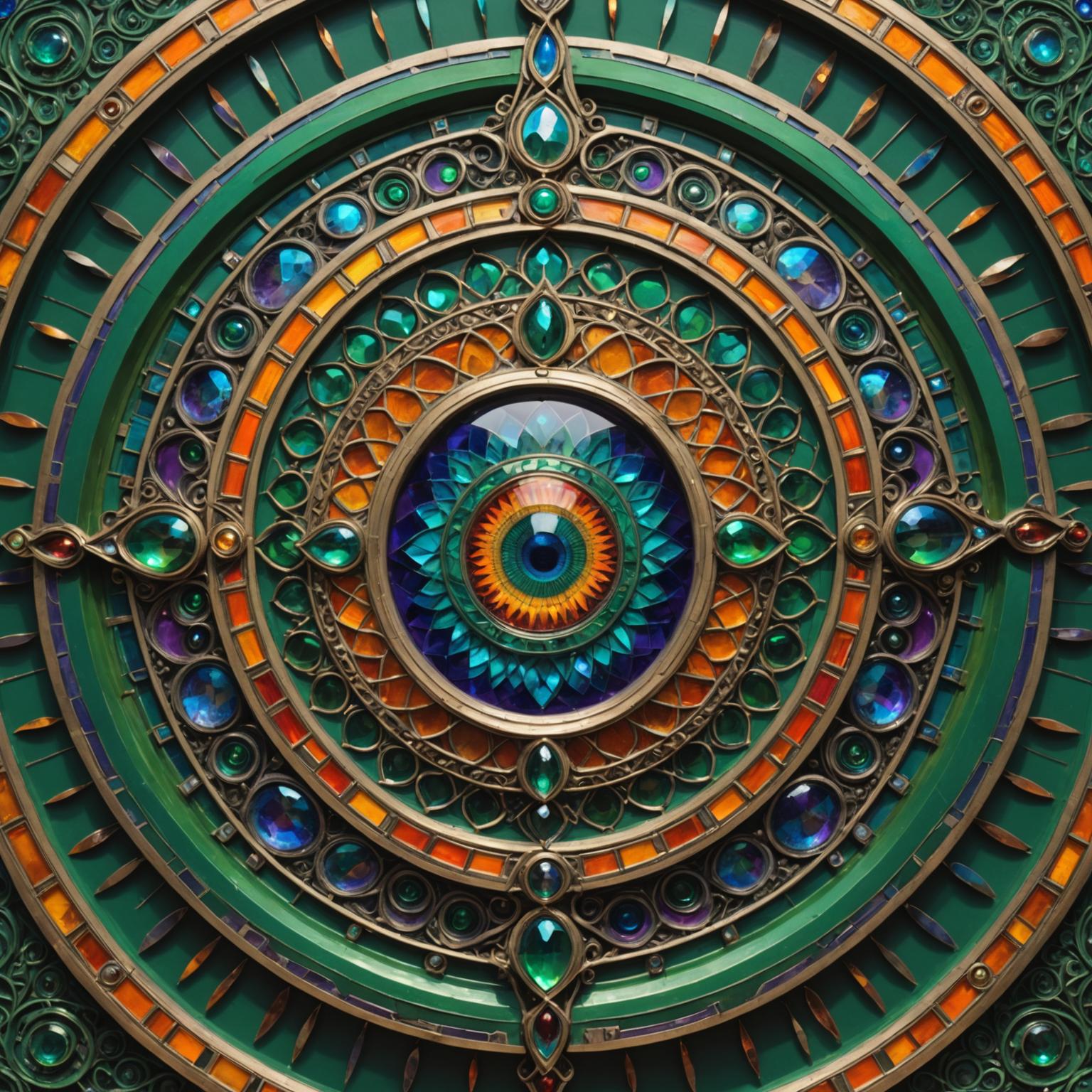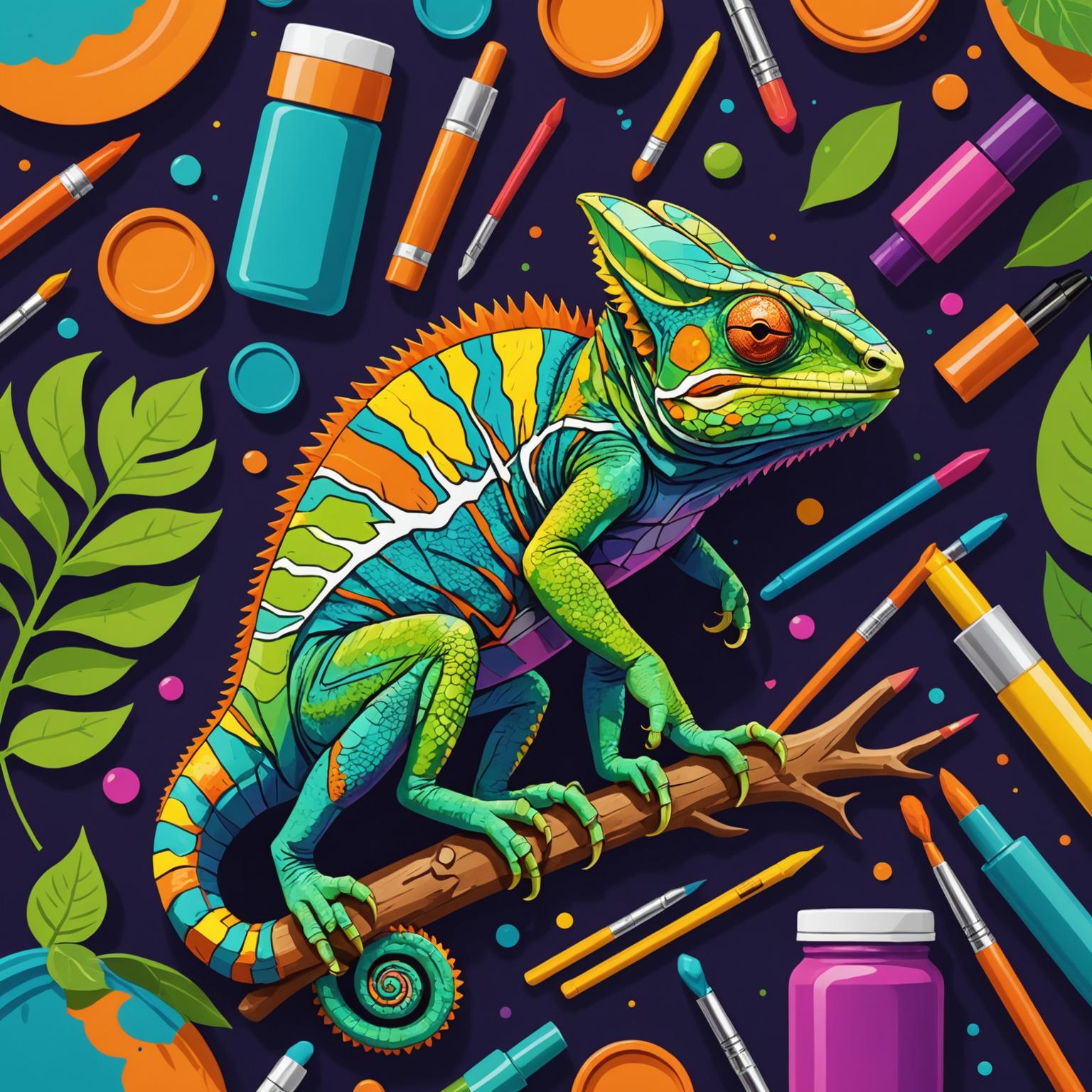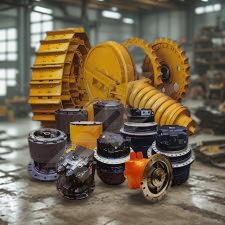Understanding Chameleon Pigments: A Revolution in Color
The world of color is constantly evolving, and at the forefront of this evolution are chameleon pigments, remarkable materials that offer a dynamic and captivating visual experience. Unlike conventional pigments that display a static color, these advanced colorants possess the unique ability to change their hue depending on the angle of view or the lighting conditions. This fascinating property has opened up a plethora of creative possibilities across numerous industries, transforming ordinary surfaces into mesmerizing displays of shifting shades. The allure of chameleon pigments lies in their almost magical ability to present multiple colors simultaneously, creating an effect that is both intriguing and aesthetically sophisticated. Their capacity to alter appearance adds a layer of depth and complexity to products, making them stand out in a crowded marketplace.
The Intricate Science of Color Shifting
The captivating visual effects produced by chameleon pigments are not a result of magic, but rather of sophisticated optical principles. At their core, these color-shifting pigments typically consist of micro-fine flakes composed of multiple layers of different materials with varying refractive indices. When light strikes these multi-layered structures, it undergoes a phenomenon known as thin-film interference. This is similar to the way colors are produced on the surface of a soap bubble or in the iridescent scales of a butterfly's wing. Different wavelengths of light are selectively reflected or absorbed depending on the thickness of the layers and the angle at which light hits the pigment particles. As the viewing angle changes, the path length of light traveling through these layers also changes, leading to a shift in the observed color. The precision required in manufacturing these layers, often on a nanometric scale, underscores the advanced technology behind these innovative materials. This scientific foundation is what enables the creation of such dramatic and predictable color transitions.
Diverse Applications of Chameleon Pigments
The unique aesthetic qualities of chameleon pigments have led to their adoption in a wide array of applications, each leveraging their ability to create stunning visual effects. In the automotive industry, they are highly sought after for custom car paints and finishes, giving vehicles an exclusive and dynamic appearance that changes as they move. The cosmetics sector has also embraced these materials enthusiastically. For instance, products like the Baltic Day: Pure Soul line of premium nail products utilize these vibrant, cosmic-inspired pigments to give nails a mesmerizing holographic and color-shifting finish. The collection features a dazzling range of designs, exuding an iridescent aesthetic reminiscent of auroras and precious gems, with hues that morph under different lights and angles. Such iridescent pigments are also found in eyeshadows, lipsticks, and other beauty products, allowing for creative self-expression. Beyond automotive and cosmetics, chameleon pigments are used in coatings for electronics, fashion accessories, sporting goods, and even in security printing to create anti-counterfeiting features on banknotes and official documents. Their versatility extends to plastics, where they can be incorporated to create eye-catching packaging or product casings. Even in the realm of digital experiences, like those curated by companies such as DOLA FOTO, which focus on self-expression through photography and innovative photo booths, the principles of dynamic visual appeal seen in chameleon effects could inspire AR filters or unique background effects, enhancing user engagement by offering novel ways to "Click into Freedom" and capture memorable moments with ever-changing aesthetics. The core appeal remains the ability to add significant value and distinction to any product they adorn.
Exploring the Spectrum: Cool Chameleon Colors and Effects
One of the most exciting aspects of working with these advanced colorants is the range of cool chameleon colors and dramatic shifts that can be achieved. Popular transitions include green-to-purple, blue-to-red, gold-to-silver, and even multi-color shifts involving three or four distinct hues. These cool chameleon colors are not just about a simple change from one color to another; they often involve a smooth, fluid transition through a spectrum of intermediate shades, creating a truly dynamic and captivating visual. The intensity and clarity of the color shift can be influenced by factors such as pigment particle size, concentration, and the application method. For example, the "iridescent aesthetic reminiscent of auroras and precious gems" described in Baltic Day nail products perfectly captures the essence of these sophisticated effects, where deep, hypnotic greens and blues or fiery fusions of bronze and magentas morph subtly under different lights. The ability to produce such unique visual experiences makes these pigments a favored choice for designers and manufacturers looking to create products that make a bold statement and leave a lasting impression on the observer. The specific combination of colors in these transitions is carefully engineered during the pigment manufacturing process to achieve the desired aesthetic outcome.
Advantages and Unique Appeal of Dynamic Colorants
The widespread adoption of chameleon pigments stems from a range of compelling advantages and their unique appeal. Foremost among these is the unparalleled visual impact. The dynamic color-shifting effect is inherently eye-catching and intriguing, immediately differentiating products that use them. This uniqueness translates into a perception of higher value and exclusivity, allowing brands to position their offerings as premium or innovative. For consumers, products featuring these pigments offer a novel experience, where the appearance is not static but interactive with light and perspective. This creates a deeper engagement with the object, whether it's a car, a piece of electronic equipment, or a cosmetic item. Furthermore, many advanced chameleon pigments are engineered for good durability and stability, ensuring that their striking effects last over time, resisting fading from UV exposure or wear. Their versatility across different materials and application techniques also adds to their attractiveness for manufacturers across diverse sectors looking for that distinctive edge. The ability of these color-shifting pigments to transform a surface into a canvas of moving color is a powerful tool in product design and branding.
Practical Considerations for Using Chameleon Pigments
While the visual results of using chameleon pigments are often spectacular, there are several practical considerations to keep in mind to achieve the best outcome. The color of the base coat over which the pigment is applied plays a crucial role in the final perceived color and the intensity of the shift. Generally, a black or very dark base coat tends to showcase the color travel most dramatically, allowing the full spectrum of the pigment's shift to be visible. Lighter base coats can produce more subtle, pearlescent effects and may highlight certain colors within the shift range differently. Application methods also require careful attention. For coatings, achieving an even orientation of the pigment flakes is vital for a consistent and smooth color transition. Spraying is a common method, and parameters such as gun settings, distance, and overlap need to be controlled precisely. When incorporating these pigments into plastics or printing inks, uniform dispersion is key. Another factor is cost; chameleon pigments are typically more expensive than conventional pigments due to their complex manufacturing process and the specialized materials involved. Therefore, their use is often reserved for applications where their unique aesthetic justifies the added expense. Finally, the lighting conditions under which the final product will be viewed significantly influence how the color shifting is perceived, which is an important design consideration.
The Evolving Landscape of Color-Shifting Technology
The field of color-shifting technology, encompassing both chameleon and iridescent pigments, is continuously advancing, driven by ongoing research and development. Scientists and engineers are constantly exploring new material combinations, layering techniques, and particle morphologies to create pigments with even more dramatic color shifts, enhanced durability, and new functionalities. Future trends may include pigments with a wider range of color travel, improved resistance to environmental factors, and greater ease of application. We might also see the development of "smart" color-shifting pigments that can change color in response to external stimuli beyond just the angle of light, such as temperature, UV exposure, or electrical voltage. Such advancements could open up entirely new application areas, including interactive displays, adaptive camouflage, and innovative sensor technologies. Companies specializing in visual innovation, like DOLA FOTO with its AI Photo Booths and AR effects, while not directly manufacturing pigments, are part of a broader ecosystem that values dynamic and engaging visual experiences. The desire for captivating aesthetics that color-shifting materials provide could certainly inspire new forms of digital creativity and interactive content in such platforms, pushing the boundaries of self-expression and visual storytelling. The ongoing quest for novel visual effects ensures that the technology behind these mesmerizing colorants will continue to evolve.
Conclusion: The Enduring Allure of Dynamic Color
In conclusion, the development and application of color-shifting pigments represent a significant leap forward in material science and aesthetic design. Their ability to transform surfaces with dynamic, flowing colors that change with perspective offers an unparalleled visual experience. From enhancing the allure of automotive finishes and cosmetic products like the vibrant Baltic Day nail lacquers, to providing unique branding opportunities and even inspiring digital effects, these pigments have carved out a distinct niche. While considerations such as application techniques and cost are important, the profound impact of their unique visual appeal often outweighs these factors. As technology continues to advance, we can anticipate even more sophisticated and versatile iridescent pigments and other color-changing materials, further expanding the horizons of design and innovation. The enduring allure of these dynamic colors lies in their ability to captivate, surprise, and add a touch of magic to the everyday world, continuously redefining our perception of color itself. The exploration of cool chameleon colors and their unique properties will undoubtedly continue to inspire creators across many fields.






